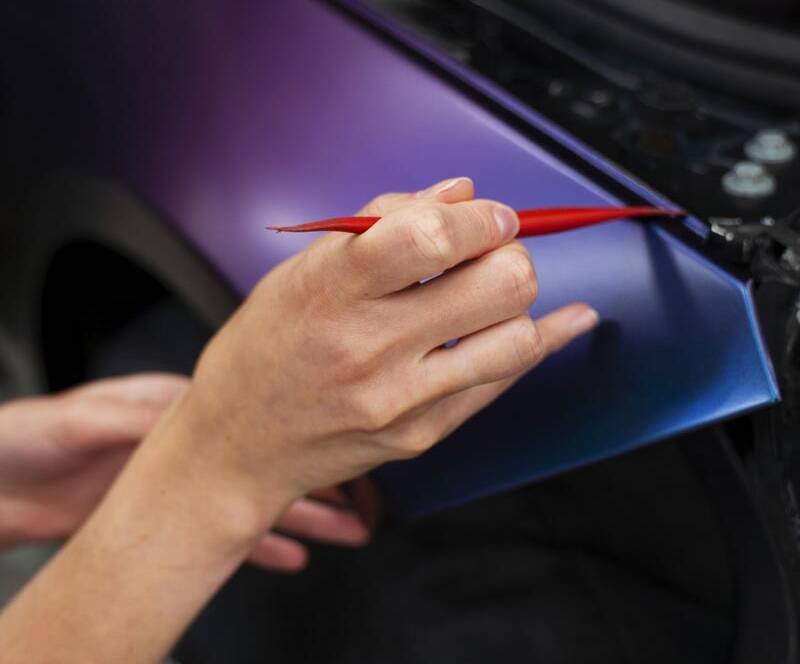Auto detailing in Canberra is more than just a trend—it’s a way of life for car enthusiasts who want to keep their vehicles looking pristine. The harsh Australian sun and varying weather conditions can take a toll on your car’s exterior. That’s why protecting your car’s paint is crucial. But when it comes to choosing between Paint Protection Film (PPF) and car wax, which one is better for your car in Australia? Let’s dive into the details.

What is Paint Protection Film (PPF)?
PPF is a transparent, thin film applied to a car’s exterior surfaces. Made from a thermoplastic urethane material, it acts as a barrier against scratches, rock chips, and other environmental damage. The film is self-healing, which means minor scratches will disappear over time as the film returns to its original state.
What is Car Wax?
Car wax, on the other hand, is a natural or synthetic product that is applied to the paint to create a protective layer and enhance shine. There are different types of wax, including carnauba wax, synthetic wax, and ceramic wax. Each type offers various levels of protection and shine.
PPF vs. Wax: A Comparative Analysis
- Durability PPF is known for its long-lasting durability. It can protect your car for up to 10 years, depending on the quality and maintenance. Car wax, however, typically lasts for a few months and requires frequent reapplication to maintain its protective qualities.
- Protection Level PPF offers superior protection against physical damage such as scratches, rock chips, and minor abrasions. It also provides UV protection, preventing the paint from fading. Car wax offers a basic level of protection, primarily against UV rays and minor contaminants.
- Cost Comparison PPF is significantly more expensive than car wax. The high initial cost is due to the material and professional installation required. Waxing is more affordable, both in terms of the product and application, which can often be done at home.
- Application Process PPF application is a meticulous process that requires professional installation to ensure a perfect fit and finish. Waxing is a simpler process that can be done by car owners themselves or by professional detailers.
Benefits of PPF
- Long-term Protection PPF provides long-term protection against a wide range of environmental and physical damages.
- Scratch Resistance The self-healing properties of PPF mean that minor scratches disappear over time.
- UV Protection PPF protects your car’s paint from the harmful effects of UV rays, preventing fading and oxidation.
- Maintenance Ease Once applied, PPF requires minimal maintenance, making it a convenient option for car owners.
Benefits of Wax
- Enhances Shine Car wax adds a deep, glossy shine to your car’s paint, enhancing its appearance.
- Cost-effective Waxing is a more budget-friendly option for car protection.
- Easy Application Waxing can be done at home with minimal tools and effort.
- Short-term Protection Wax provides a temporary protective layer against UV rays and contaminants.
Downsides of PPF
- High Initial Cost The initial cost of PPF is high due to the material and professional installation required.
- Professional Installation is required. PPF needs to be installed by professionals to ensure proper application and effectiveness.
Downsides of Wax
- Frequent Reapplication is Needed Wax needs to be reapplied every few months to maintain its protective properties.
- Limited Protection Wax does not offer the same level of protection against physical damage as PPF.
Choosing the Right Protection for Your Car
When deciding between PPF and wax, consider your budget, how often you use your car, and your personal preferences. If you want long-term, hassle-free protection and don’t mind the higher cost, PPF is a great choice. If you prefer a cost-effective, easy-to-apply solution and don’t mind frequent reapplications, waxing might be a better option.
Environmental Considerations
Both PPF and wax have environmental impacts. PPF, being a plastic product, can contribute to plastic waste if not disposed of properly. However, its long lifespan reduces the frequency of replacements. Wax, especially synthetic variants, can contain chemicals that might not be eco-friendly. Opt for eco-friendly wax options and ensure proper disposal of PPF to minimize environmental impact.
Popular PPF Brands in Australia
Some of the leading PPF brands in Australia include XPEL, SunTek, and 3M. These brands are known for their high-quality films and excellent customer reviews.
Popular Wax Brands in Australia
Top wax brands in Australia include Meguiar’s, Turtle Wax, and Mothers. These brands offer a range of waxes catering to different needs and budgets, and they have received positive reviews from consumers.
DIY vs. Professional Application
- Pros and Cons of DIY DIY waxing is cost-effective and convenient but requires regular maintenance. DIY PPF application is not recommended due to the complexity involved.
- Benefits of Professional Service Professional application of both PPF and wax ensures optimal protection and finish. Professionals have the tools and expertise to apply these products correctly, providing better results.
Conclusion
In conclusion, both PPF and wax offer distinct benefits and drawbacks. PPF provides superior long-term protection but comes at a higher cost. Waxing is more affordable and enhances your car’s appearance but requires frequent reapplication. Consider your budget, usage, and personal preferences when choosing the best option for your car. Ultimately, both methods can keep your car looking great and protect its paint from the harsh Australian elements visit Canberra Auto Detailing for more.


